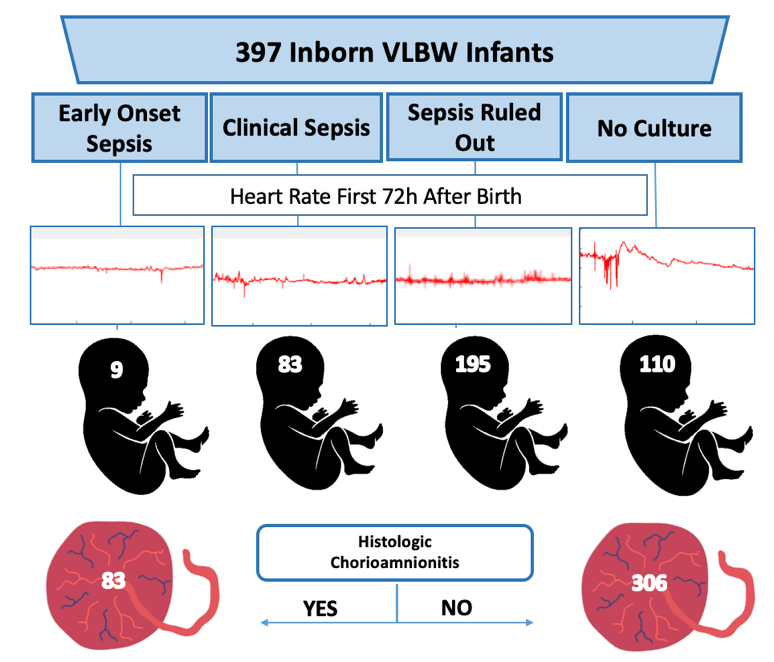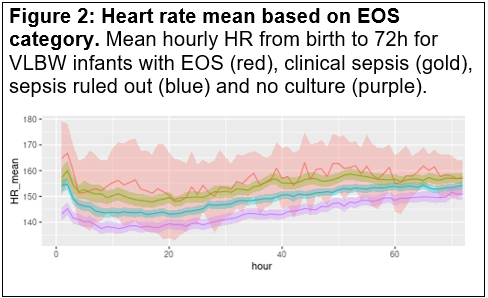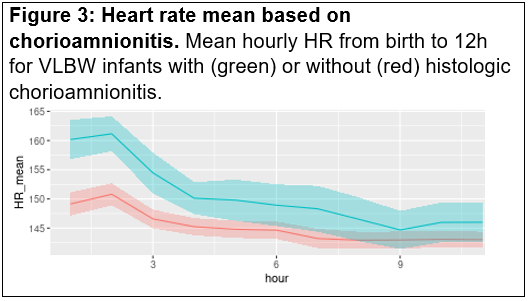Neonatal Infectious Diseases/Immunology
Neonatal Infectious Diseases/Immunology 4
427 - The Impact of Chorioamnionitis and Early Onset Sepsis on Heart Rate and SpO2 in Very Low Birth Weight Infants
Publication Number: 427.335
.jpg)
Charlene R. Bultmann, DO (she/her/hers)
Neonatal-Perinatal Medicine Fellow
University of Virginia School of Medicine
Charlottesville, Virginia, United States
Presenting Author(s)
Background: Chorioamnionitis and early onset sepsis (EOS) in very low birth weight (VLBW) infants may cause a systemic inflammatory response reflected in patterns of heart rate (HR) and oxygenation measured by pulse oximetry (SpO2).
Objective: Determine whether early HR and SpO2 data contain patterns associated with chorioamnionitis and blood culture-positive EOS or clinical sepsis, versus ruled-out EOS, or no suspected EOS.
Design/Methods:
We conducted a retrospective study of all inborn VLBW infants admitted to the University of Virginia NICU from 2012-2019 with at least 4 hours of every-2-second HR and SpO2 data available in the first 24h after birth. Hourly HR and SpO2 mean, standard deviation, skewness and kurtosis were calculated for each infant and group means were compared based on histologic chorioamnionitis and EOS category.
Results: 397 infants had at least 4h of HR and SpO2 data available (Figure 1). The mean GA for each of the 4 groups ranged between 26.3 and 30.5 weeks. Histologic chorioamnionitis was present in 21%. In the 72 hours after birth, mean HR was higher in infants with EOS or clinical sepsis compared to those with sepsis ruled out or no culture obtained (Figure 2). HR was higher in infants of mothers with histologic chorioamnionitis (Figure 3). In addition to higher HR, infants with EOS had lower mean SpO2.
Conclusion(s): HR is higher and SpO2 lower in VLBW infants with culture-proven or clinical EOS and histologic chorioamnionitis. Future work will adjust for clinical variables and determine whether HR and SpO2 analysis can reduce antibiotic exposure after birth for VLBW infants.


